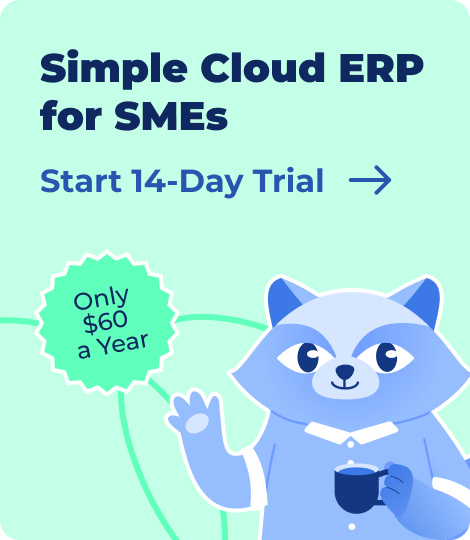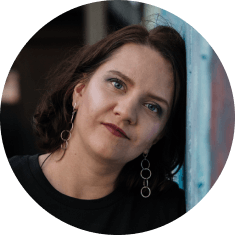Has ever the thought of drinking mulled wine at 11 a.m. occurred to you? How about a ginger ale at lunchtime? We haven’t gone nuts — these ideas are possible if you try soft drinks under the brand called Space.
Passionfruit, cheese, violet, sea salt, watermelon — this is far from the full list of ingredients used to create non-alcoholic drinks Space. Moreover, they are sugar-free, preservative-free, and GMO-free. These lemonades can be drunk both cold and hot, e.g. in winter.
Meet Sergey Bondarev — the co-founder of Space D2C brand. Sergey told Kladana how to make, promote, and sell soft drinks. You will learn what it is like to compete with Pepsi, Coca-Cola, and Georgian lemonade monsters. And the most important thing is that the business was launched like a micro startup: quickly, without loans, investors, and fear.

How a Bartender Came up with the Idea of Making his own Lemonades
For 10 years I had been working in various cocktail bars, and the last one was a small gin bar. There were only four cocktails. Each one was made in about 200 variations. One of the cocktails was a gin and tonic. But there were always not enough tonics — two or three, and there were a lot of gins, so it was impossible to reach 200 variations.
Then in 2018, we decided to create our own tonic. I stayed after my shift to make these drinks. The first ones were in plastic bottles. We screwed the caps on ourselves, glued the labels on, and sold only at the bar.
Then I realized it was time to launch manufacturing. We prepared all the documents, certified the product, and switched to glass bottles. Then we parted ways with investors, and In 2019, my wife & I founded our own brand — Space.
We Invested 18 Times Less Money than we were Told
When I was just starting to get into business, I met a guy. He was a potential investor and a marketing director in a large company. He told me that the minimum entry threshold was $200,000. We invested less than $10,000. Investors were not attracted.
We have several competitive advantages. Sometimes a cool illustration on the label is important, or you need to call and explain why our drink is better than another. Sometimes you can play on pricing, saying «You are now making a cocktail and it costs $1.5, but with our drink, it will cost $1 — the margin will increase».
Why Such Peculiar Flavours
One of our strongest competitive advantages is that we can make a lot of interesting flavours for specific tasks. So far we have certified 47 different flavours. We can’t fit them all into one product line, so we sell lemonades under different brands.
For example, for the restaurant chain Syrovarnya (which can be translated as «Cheese Dairy»), we made a complex flavour «cheese with melon».
I hate focus groups! Once we got 100 people together. The flavour was peculiar — hibiscus and strawberry. 64 out of 100 people said it was undrinkable. But we released the flavour anyway, and from the second month, it was in second place in sales.
That’s why I try not to focus on focus groups, but rather on real customers. When they say that everything is great, but they would like the flavour to be sweeter, we start thinking about it and ask other customers.
Most often we turn to distributors, because they are further ahead in promoting our lemonades, they know their customers’ habits better and can answer questions expertly.
Distributors know a lot about our product — they see data from manufacturing and photographs, they understand what to do with the lemonade, what it consists of, and so on. This makes it easy for us to spread the word.
Production Management at Kladana
My wife handles paperwork, accepts orders, and uses cloud services for work, Kladana in particular. I am responsible for production and shipments.
We also have two employees. For all the rest, we use outsourcing:
- Cars that travel from production to warehouse;
- A marketing specialist from Minsk (Belarus);
- Manufacturing in the Moscow region;
- A logistics company that delivers bottles to us.
We try to work with companies rather than with people. Even my brother, our designer, who did all the identity and branding of Space, also founded a company and now accepts orders not only from us.
Thanks to this model, a logical cost structure was obtained: if the machine did not deliver any products from manufacturing, then we do not pay for it; If there is enough lemonade in stock and we have not released a single bottle, we do not pay for the production.
BOMs are created for half a ton of drinks. You cannot pour less than 500 liters of water into the tank, otherwise, the appliance will become unusable within six months. We get 1,500 lemonade bottles out of 500 liters of water. So, we need 1,500 glass bottles, the same number of labels and caps, and a certain amount of raw materials. In total, we get 75 boxes of lemonade.
Using Kladana, we accept orders and generate sales quotations and shipment invoices. All BOMs are stored in Kladana. All production processes go through the software. In two clicks, 1,500 bottles are moved from one warehouse to another.
We have three warehouses: one is used for raw materials, the second one — for production, and the third one in Moscow — for finished products. Purchased raw materials are recorded in Kladana, and then they are transferred to production. The finished goods are transferred to another warehouse in Moscow.
We regularly conduct inventory countings — they are also convenient to do in Kladana. Previously, we used the Excel spreadsheet, and it was terrible 🙂
We do not have regular suppliers: my task is to purchase a higher quality ingredient at a lower price.
Sales Prices & Unit Cost
Prices are constantly jumping, and so is the cost of drinks. When you carry out the technological process in Kladana, it is very easy to see how much the drink costs.
The price of our lemonade in stores is $0.7, and the wholesale price when buying a large batch is $0.5–0.57. In coffee shops, a drink costs about $1.5, in a bar — $2–2.6. The highest price we saw was $4.7.
We do not control the selling price upwards, but we try to control the minimum price so as not to lose value. High markups in bars are not difficult to understand: it is unlikely that an expensive bar can afford to lower the price. They have expensive staff, and huge rent to pay — so, the pricing is different.
In the first year, 2018, 150,000 bottles were sold, and in the second one — 310,000. The bottles were sold more than twice, and the turnover turned out to be less than half — we switched from 0.25 ml to 0.33 ml bottles, maintaining the same prices.
Wholesale & Retail
Our lemonades are sold in 350+ restaurants & bars. We have 11 distributors and two federal chains working with us — Vkusvill and Perekrestok (large supermarket chains).
In the beginning, we did not think about retail and worked only with HoReCa — restaurants and bars. But then the pandemic started, HoReCa was almost paralyzed, and we had to do something.
Promotion Channels
We have quite a few sales channels. One of the most important ones is WOM (word of mouth). It is important to us how we are advised and suggested.
Also, I believe in content marketing: I try to keep people engaged. We have captivating content everywhere: publications on various platforms, on the website, and social networks.
We are working on our image. It is very important to us, and here’s why. We imagined our client, for example, from HoReCa. The bar manager makes purchasing decisions, and we need them to hear from 5–6 different sources that Space provides great products.
Social media are more of an auxiliary tool for us: if we release a new drink, we make a splash on social media. We can get our subscribers excited by launching a contest. Or if we need additional traffic, we buy it on social networks.
We summarize every month: how much we sold, what worked, and what went wrong. We try to support events and activities in bars and fitness clubs.
Competitors: Global Brands and Georgian Lemonades
We have a massively competitive environment — we have to compete with companies that have been on the market for many years. For example, Schweppes, which belongs to the oldest soft drink company. Jacob Schwepp invented tonic water in the form in which it exists today, and he also invented carbonated water.
We also have a direct competitor — Fentimans. These are English lemonades, and the company is 120 years old. During this time, one could have learned how to make just the perfect drinks!
Our competitors are mainly foreign brands, and this makes us very happy because their sales are highly dependent on exchange rates: their prices are much higher than ours. It turns out that we can compete.
And, of course, there are Georgian lemonades. If we talk about Natakhtari, we are as young as possible compared to them. And in terms of market coverage, we and they are in completely different weight categories.
Handy Tip
If you have a similar business to Sergey, and you need to streamline your production management, Kladana can be of help. In our cloud app, you can create BOMs, and production orders, purchase raw materials, and sell finished goods.
You can also try partial manufacturing, calculate the unit cost, operation & labour costs, assign employees to particular production operations, and much more.
Plans — to Improve the Image of the Entire Country
We want to travel the world and open branches everywhere! Each of our lemonades has a «Made in Russia» badge — Artemiy Lebedev (a well-known Russian designer) did it. We want to show the world that there are good products in Russia.
There is often a rejection of a Russian brand: «Oh, are you Russian? Then we don’t need your lemonade.» We have to personally explain why we are good, useful, and profitable. Russian products really have a huge image problem.


